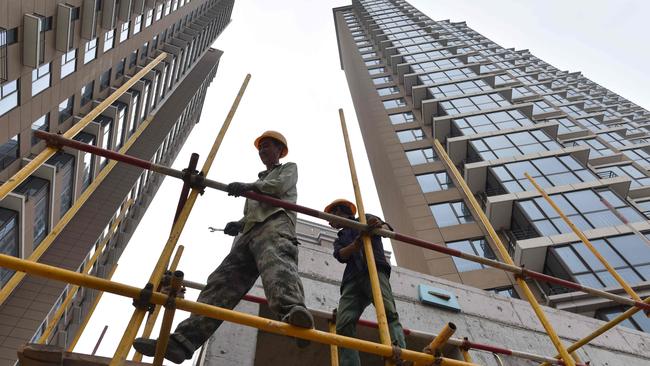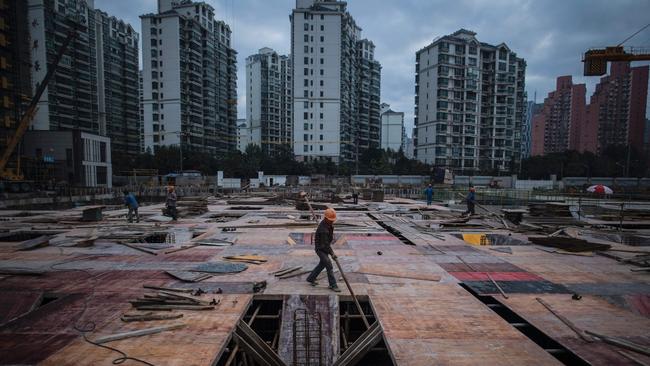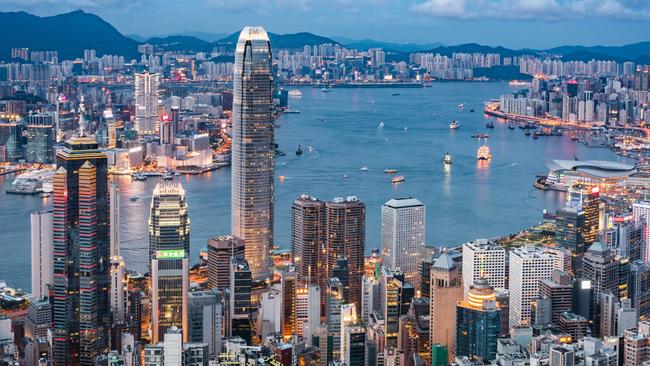
The iron ore price is now down almost 40 per cent since its peak in July and our largest miner BHP has been smashed more than 20 per cent. This is a major event for both the Australian economy and the share market so it’s important to understand what has caused it and where we are likely to go.
And in a bizarre twist to the events causing the iron ore price fall, money is pouring out of mainland China into Hong Kong where apartment prices are skyrocketing.
Australian apartments have received some benefit from the money exodus from China into Hong Kong but currency restrictions hold back the money tide.
While the western world is undertaking massive stimulation, China is implementing a series of measures to stop property speculation and end the massive China property boom.
This requires substantial cuts in development and some areas of industrial activity which has contributed to the big fall in the iron ore price — an event which is creating great joy among the Australia haters in China.
Chinese President Xi Jinping has warned his people to “discard their illusions” about having an easy life and “dare to struggle” to protect the country’s sovereignty and security.
“The great rejuvenation of the Chinese nation has entered a key phase, and risks and challenges we face are conspicuously increasing……It’s unrealistic to always expect easy days and not want to struggle.”
Although the analogy is not perfect, President Xi’s statement reminds me of 1990 when the then Australian treasurer Paul Keating declared that the deep downturn hitting the nation as a result of higher interest rates was “the recession we had to have”.
Around the same time then US Federal Reserve chief Paul Volcker was killing off the American boom with interest rates of up to 19 per cent in 1990-91 to end the US wage-price spiral.
The recent China boom that sent the iron ore price spiralling upwards was staggering. China’s building activity represented around half the world’s global construction business. A majority of the world’s cranes were being used in the China property and homebuilding sector. This sector was the key driver of local government revenues via fees and levies. Property represented about one quarter of the Chinese economy and the boom was out of hand.

In recent decades China has undertaken contractions in the property sector but as soon as those contractions started to impact on living standards the clamps were released.
This time it is different because the Communist Party feared it was losing control of the nation and that at some point in the future there would be a bubble burst that might jeopardise Communist rule.
Accordingly this is a deliberate Volcker-style style action to end a boom so it is likely that the contraction is only just starting. The world will need to adapt to a very different China. The building clamps are linked to an attack on excess wealth, major restrictions in high technology companies and those warnings that China must be prepared for tougher times.
In many ways the Chinese are facing problems not that dissimilar to other nations, including Australia.
Despite the relaxation of the one child policy, fertility rates were not increasing but property prices were rising sharply and which did not seem sustainable longer term. Moreover the real estate boom was greatly increasing inequality, which was seen as against Chinese communist party base principles.
Similarly, booming property markets in Australia, North America, Britain and across western Europe are causing young people to complain about affordability of home ownership. In turn that may be impacting birthrates. World property markets have been boosted by low interest rates, a savings glut and a desire for more living space, partly triggered by isolation and work from home in the pandemic.
According to the Organisation for Economic Co-operation and Development (OECD) this year only three of the 40 countries they survey experienced house price falls.
China is trying to lessen the impact of the property crunch by stimulating other areas of the economy but the property sector is too big to avoid a slowdown. In addition China’s property sector has borrowed vast sums to fan the boom. Some estimates say that Chinese developers have borrowed in the vicinity of $US5 trillion. There’s no way they will be able to repay that money and the consequent shocks will not be confined to China.
Meanwhile there are no such fears in Hong Kong.
The South China Morning Post explains that Hong Kong is unique in having the US dollar peg and being next door to mainland China. This has guaranteed not just cheap money but huge capital supply from mainlanders eager for property investments free from the anti-speculation and price control policy imposed in the mainland. Unsurprisingly, the average price of the city’s second-hand homes has been hitting record highs.

Local rents are being pushed up. People saving to buy a home and those who can’t afford to buy are forced into the rental market. Most analysts expect rents to continue to rise for the rest of the year.
The world’s major central bankers, including those in Hong Kong, don’t seem to fret too much about the property bubbles causing financial instability and social inequity.
Will the world need to follow China?


